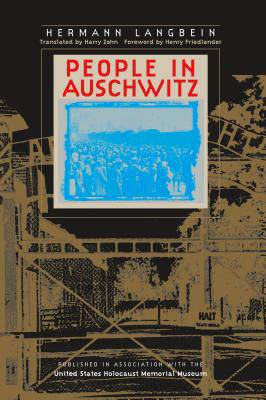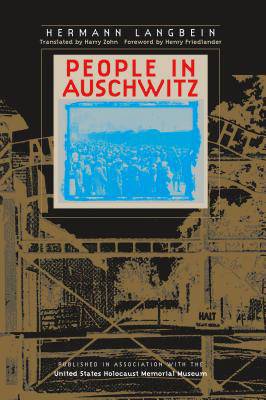
Door een staking bij bpost kan je online bestelling op dit moment iets langer onderweg zijn dan voorzien. Dringend iets nodig? Onze winkels ontvangen jou met open armen!
- Afhalen na 1 uur in een winkel met voorraad
- Gratis thuislevering in België vanaf € 30
- Ruim aanbod met 7 miljoen producten
Door een staking bij bpost kan je online bestelling op dit moment iets langer onderweg zijn dan voorzien. Dringend iets nodig? Onze winkels ontvangen jou met open armen!
- Afhalen na 1 uur in een winkel met voorraad
- Gratis thuislevering in België vanaf € 30
- Ruim aanbod met 7 miljoen producten
Zoeken
Omschrijving
Hermann Langbein was allowed to know and see extraordinary things forbidden to other Auschwitz inmates. Interned at Auschwitz in 1942 and classified as a non-Jewish political prisoner, he was assigned as clerk to the chief SS physician of the extermination camp complex, which gave him access to documents, conversations, and actions that would have remained unknown to history were it not for his witness and his subsequent research. Also a member of the Auschwitz resistance, Langbein sometimes found himself in a position to influence events, though at his peril.
People in Auschwitz is very different from other works on the most infamous of Nazi annihilation centers. Langbein's account is a scrupulously scholarly achievement intertwining his own experiences with quotations from other inmates, SS guards and administrators, civilian industry and military personnel, and official documents. Whether his recounting deals with captors or inmates, Langbein analyzes the events and their context objectively, in an unemotional style, rendering a narrative that is unique in the history of the Holocaust. This monumental book helps us comprehend what has so tenaciously challenged understanding.
People in Auschwitz is very different from other works on the most infamous of Nazi annihilation centers. Langbein's account is a scrupulously scholarly achievement intertwining his own experiences with quotations from other inmates, SS guards and administrators, civilian industry and military personnel, and official documents. Whether his recounting deals with captors or inmates, Langbein analyzes the events and their context objectively, in an unemotional style, rendering a narrative that is unique in the history of the Holocaust. This monumental book helps us comprehend what has so tenaciously challenged understanding.
Specificaties
Betrokkenen
- Auteur(s):
- Uitgeverij:
Inhoud
- Aantal bladzijden:
- 568
- Taal:
- Engels
- Reeks:
Eigenschappen
- Productcode (EAN):
- 9781469628370
- Verschijningsdatum:
- 16/10/2015
- Uitvoering:
- Paperback
- Formaat:
- Trade paperback (VS)
- Afmetingen:
- 156 mm x 234 mm
- Gewicht:
- 861 g

Alleen bij Standaard Boekhandel
+ 145 punten op je klantenkaart van Standaard Boekhandel
Beoordelingen
We publiceren alleen reviews die voldoen aan de voorwaarden voor reviews. Bekijk onze voorwaarden voor reviews.











